5.Co-ordination – The Linking system
Sakshi Education
Co-ordination – The Linking system
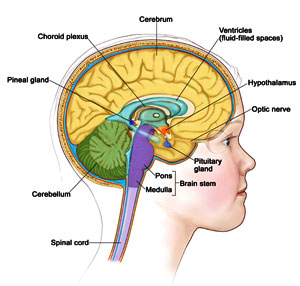 Synopsis:
Synopsis:
- Nervous system and endocrine system are the systems that control and co-ordinate various functions in the body.
- The responses of the nervous system can be classified as reflex, voluntary and involuntary actions.
- The human nervous system is studied under 2 divisions -the Central Nervous System and the Peripheral Nervous System.
- The Central Nervous System consists of brain and spinal cord. The peripheral nervous system is further divided into Somatic Nervous System and Autonomous Nervous System.
- The Autonomic Nervous System has 2 parts- Sympathetic and Parasympathetic, which cause physical reactions opposite to each other.
- Nerve Cell is the structural and the functional unit of nervous system.
- Synapse is a gap across which signals are transmitted from one neuron to the other.
- Hormones produced in one part would move to another part to achieve the desired effect.
- A feedback mechanism regulates the action of hormones.
- Directional movements in plants in response to specific stimuli like light, chemicals, etc; are called tropic movements.
- Plant hormones are usually growth effectors or inhibitors. Some growth effectors are Auxins and Gibberellins while inhibitors are like Abscisic acid.
- All our functions are carried out by an effort of several systems working together. All living organisms respond to stimuli.
- The ability to react to particular stimuli in a particular situation must be of great importance in ensuring the survival of an organism.
- Responses are brought about by rapid changes in some muscles and such changes are usually related to changing stimuli.
- Each nerve cell consists of a head, dendrites and Axon.
- Nervous system contains about 10 billion of them which communicate with each other in a specific manner.
- Afferent neurons are also called as sensory nerves. Efferent neurons are also called motor nerves.
- Association nerves link together the afferent and efferent nerves.
- A single pathway going up to the spinal cord from detectors and returning to effectors is a reflex arc.
- Most actions of our body are controlled together by voluntary and involuntary pathways.
- The brain is present in the hard bony box like structure called cranium. It is covered by 3 layers called Meninges.
- Spinal cord extends from the back of the hind brain to the back of the stomach or lumbar region.
- The peripheral nervous system is the network of spinal and cranial nerves that are linked to the brain and spinal cord.
- The disease ‘sugar diabetes’ is a condition in which the amount of free sugar in the blood and in urine is cause of pancreas.
- Medulla oblongata is the region that regulates heart beat, breathing, etc; brings by the system called the autonomous nervous system.
- The hormones present in the plants are called as phytohormones.
- All plants show positive responses to phototropism but in creepers grow towards support and wind around them which is called thigmotropism.
- Pollen grain responds to stimulus as pollen tube grows pollen to reach the ovule for fertilization. This type of response to chemicals is called chemotropism.
Four Marks Questions
- Do you think the body’s team work maintains functioning of our body? Justify your answer with an example?
Ans.- Yes, the statement is correct.
- For example when we touch a hot plate, very quickly without thinking about it we pull out hand away.
- The heat is sensed by a heat receptor in our hand. The receptors trigger an impulse in a sensory neuron, which transmits the message to the spinal cord.
- The impulse is passed on a relay neuron and passes it to a motor neuron. This passes the impulse to a muscle in our arm.
- The muscle then contracts and pulls our hand away from the hot plate. The muscle of arm is an effector because it responds to the stimulus.
- But, if we pull away our hand, then the plate would drop and break into pieces. Now the Central Nervous System [CNS] comes into action. When the message from our fingers saying that "the plate is too hot" arrives at our CNS, but there is already another message saying that "but don’t drop it". The brain will consider both messages together. It may then decide to send a message to our muscles to put down the plate gently. And not drop it. This intelligent response has been made possible only due to the CNS.
- Thus the coordination is brought by the team work of all systems.
- Give an example of coordination in your body where both hormonal and nerves control function together?
- The adrenalin hormone prepares our body to function at maximum efficiency during emergency situation like danger, anger, excitement etc.
- When we face with a dangerous situation like being chased by a ferocious dog.
- Then our nervous system stimulates the adrenalin glands to secrete more adrenalin hormone into our body. This hormone increases our heart beat, breathing rate and blood flow into muscles.
- All these actions of adrenalin hormone produced a lot of energy in our body very quickly.
- This energy helps us to run away very fast to run away ourselves.
- In this action the complete coordination in human body is achieved by the nervous system and the endocrine system.
- Consider that you are passing by a garbage disposal area and you immediately cover your nose. Arrange the events below in a logical order by making them from 1-5 to trace the events that happen in the nervous system from detection of foul smell[stimulation generation] to covering your nose[response]?
a. At the end of the axon, electrical impulse release chemicals.
b. Stimulus received on the dendritic cells of a neuron sets off chemical reaction that creates an electrical impulse.
c. Electrical impulse transmitted through cell body and axon.
d. The chemicals cross the synapse and reach the next neuron. Similarly, the electrical impulse crosses several neurons.
e. Finally, the impulse is delivered from neuron to the gland that helps in recognition of the foul smell and muscle cells that helps in covering the nose.
Ans.1. [ii] 2. [iii] 3. [i] 4.[iv] 5.[v]
3. Distinguish between :
a) Stimulus and Response
b) Afferent and Efferent nerves
c) Central and peripheral nervous system
d) Receptor and Effector
Ans.a) Stimulus and Response
I. The changes in the environment to which the organisms respond and react are called ‘stimuli’,
II. The response is the way something acts after the stimulus has happened.
III. The living organisms show response to stimuli such as light, heat, cold, smell, pain, touch, pressure of water and force of gravity.
IV. The response of the organisms to a stimulus is usually in the form of some movement of their body part.
b) Afferent and Efferent nerves
Afferrent Nerves
Efferent Nerves
1. These are also known as sensory nerves.
1. These are also known as motor nerves.
2. They carry impulses from sense organs and receptors to specific areas in brain and spinal cord.
2.They carry impulses from brain or spinal cord to effector organs
c) Central nervous system and peripheral nervous system
Central Nervous System
Peripheral Nervous System
1.It consists of brain and spinal cord
1.It consists of all nerves that arise from brain and spinal cord
2. The skull protects the brain and the vertebra protects the spinal cord.
2. It is not protected.
3.Sensory nerves carry information to CNS
3. It relays the information to and from CNS
4.It processes the information gathered by PNS
4. It integrates the information and details gathered from the external environment.
5.It handles the involuntary information
5. It handles the voluntary information.
e) RECEPTOR and EFFECTOR
Receptor
Effector
1.These are the structures at the end of nerve fibres that collect information to be conducted by the nerves
1.These are muscles or glands which work in response to the stimulus received from the motor nerves
2. They can detect changes in the environment which are called stimuli and turn them into reflexes.
2. It is any part of the body that produces response.
3. The information collected by the receptors is conducted by the nerve fibres to control nervous system.
3. Connects the central nervous system with the various organs in the body and the limbs.
4. Receptors are located in the sense organs.
4. Effectors are the glands or muscles in the body.
-
Suggest an experiment to show how roots grow away from light in most plants?

Aim: To show how roots grow away from light in most plants.
Material required: Potted plant in a glass Jar.
Procedure:
- Take a potted plant growing in a plastic jar.
- Keep it in an open place where sunlight is available.
- The stem grows straight up towards the source of light.
- The root of the plant also grows straight but in the downward direction.
- Now keep the potted plant having straight stem and straight root near the window in a dark room
Observation:
After some days we will see the root of the plant bends to the left side away from the light which is coming from the window.
Result: This shows that roots grow away from light.
- Give an example to show how hormones can influence visible changes in your body?
- All the changes in the body are carried out under the influence of a chemical called ‘adrenaline hormone’ released by adrenal gland.
- The adrenaline hormone prepares our body to function at maximum efficiency during emergency situations like danger, anger, excitement, fear etc.
- When we are chased by a ferocious dog, then our nervous system stimulates the adrenal glands to secrete more adrenaline into blood.
- Adrenaline increases our heart beat, breathing rate, blood flow into muscles and cause liver to put more stored glucose into our body.
- All these functions of adrenaline produce a lot of energy in our body very quickly. And this energy helps us to run away very fast from the dog to save ourselves.
- How does neuron differ from an ordinary cell in structure? Write short
notes?
- Neuron is the largest in the body.
- Neurons contain the same basic parts as any other animal cell but their structure is specially adapted to be able to carry messages over long distances in the body quickly.
- Each Neuron has three components: cell body, dendrites and axon.
- Cell body of neuron is like a typical animal cell which contains cytoplasm, nucleus, ribosomes, golgi complex, ER.etc.
- The short nerve fibres are called dendrites and longest nerve fibre is known as axon. They arise from cell body.
-
The axon has an insulating and protective sheath of myelin around it.
- Man is the most intelligent animal. What could be the fact that helped us to reach such a conclusion?
Man is the most intelligent animal because of the following reasons:
- The greatness of human brain is to analyse a problem and think of a solution. We can do this even when the full information is not available.
- At the same time the human brain has aesthetic sense to appreciate poetry, music, sculpture, paintings and the beauty of objects and nature.
- The brain stores the information so that behavior can be modified according to the past experience. This function makes the brain the organ of thought and intelligence.
- Another wonderful capacity of human brain is communication through language. No other animal can pass on so much information through sounds as a human being can.
- Several animals can make sounds and communicate to a very limited extent through these sounds.
- Man has developed the ability through his brain to give a script to the sounds so that all the information he has gathered in his life time is written down and passed on to the next generation.
- With this skill in communication, humans have become a superior race than any other animal on this planet.?
- If you visit a doctor what doubts you would like to clarify about pancreas?
Doubts I would like to clarify about pancreas from doctor:
PANCREAS
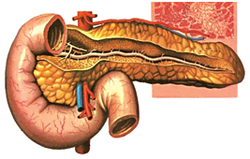
- What is Pancreas?
- Is it an endocrine gland or exocrine gland?
- What is the digestive juice secreted by exocrine part of the gland?
- What is the name of the endocrine part?
- What are the cells that secrete hormone in the endocrine part?
- What is hormone secreted by the Pancreas?
- Under which conditions Pancreas secrete insulin?
- What is the function of the insulin?
- Name the disease caused by the deficiency of Insulin?
- Where is Pancreas located in our body?
- How is diabetes characterized?
- How to control Diabetes?
- Is pancreatic cancer hereditary?
- Draw a neatly labeled diagram off Brain and write few points how it is protected?
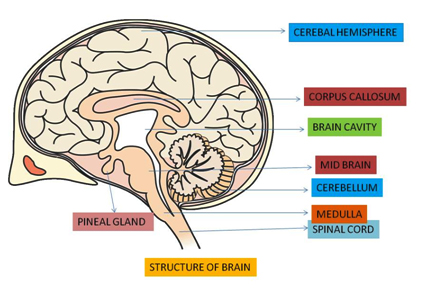
- The brain is present inside the hard bony box like structure called cranium.
- It is covered by three layers called the meninges.
- The meninges are continuous and cover spinal cord as well.
- The space between the inner layers is filled with fluid called cerebro-spinal fluid.
- It serves as a shock absorbing medium and protects the brain against shocks /jerks along with the meninges and cranium.
- What is Reflex Arc? What are the components of it?
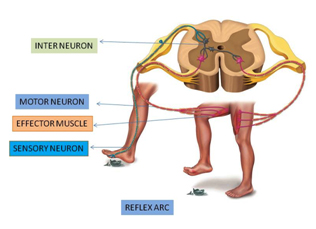
- Strutural and functional unit that carries out Reflex action is called Reflex Arc.
- Reflex arc consists of Receptor, a sensory nerve, an association nerve, motor [efferent] nerve and effector nerve.
- Receptor receives information about stimuli and generates electrical potentials.
- The sensory nerve is associated with the receptor. It carries the information from the receptor organ to the spinal cord.
- In the spinal cord the sensory nerve makes connections with other neurons in the grey matter. These neurons are called inter neurons or association neurons.
- Association neurons process the information and generate responses.
- The efferent fibres of motor nerves carry these responses from inter neurons to the effector organs which is usually a muscle. Take a small plant. Cover base portion of the plant tightly and hang the plant upside down. Observe the plant for a week. Based on your observation how can you support Phototropism?
Ans.- After few days we find that the stem of plant bends upwards away from the earth.
- The roots of the plant grow downwards in response to the pull of gravity.
- The stem of a plant responds to light and bends towards it.
- This shows that the stem of a plant always grows towards light and this is known as ‘Phototropism’.
2 Marks Questions
- How does phototropism occur in plants?
a) When growing plants detect light by a hormone called ‘auxin’, synthesized at the shoot tip helps the cells to grow longer.
b) When light is coming from one side of the plant, auxin diffuses towards the shady side of the shoot.
c) The concentration of the auxin stimulates the cells to grow longer on the side of the shoot which is away from light.
d) Thus the plant appears to bend towards light.
- Give an example and explain how plants may immediately respond to a stimulus.
 Mimosa pudica [ Atthi patthi, touch me not plant]
Mimosa pudica [ Atthi patthi, touch me not plant]
- The plants respond to various stimuli very slowly by growing.
- So in most of the cases the response of a plant to stimulus cannot be observed immediately.
- But in the case of touch me not plant Mimosa pudica, it shows immediate response when we touch.
- When we touch the leaves of touch me not plant with our fingers, then its leaves fold up and drop almost immediately.
- The folding up of the leaves of sensitive plant on touching is an example of nastic movements in plants.
- Is the structure of neuron suitable for transmission of impulses? Analyse.?
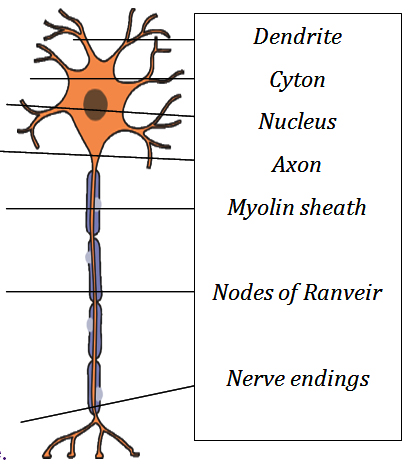
- The dendrites of the neuron serve as the stimulus receptors for the neuron, but they respond to a number of different types of stimuli.
- The cell body contains the necessary structures for keeping the neuron functional.
- Surrounding the axon is the myelin sheath, which plays an important role in the rate of electrical transmission.
- At the terminal end of the axon is a branched structure with ends called synaptic knobs.
-
From this structure chemical signals can be sent to neighbouring neurons.
- The axon of nerve cell in hand is shorter than the axon of nerve cell in leg. Do you support this statement? Why?
- Yes, I support this statement.
- The axon of nerve cell in hand is shorter than the axon of nerve cell in leg.
- Because the sciatic nerve in the leg contains neural axons that extend from the spinal cord all the way to the muscles in the foot, a distance of over a 1 meter.
-
Usually the length of leg is more in size than hand. Hence the axon of nerve cell in hand is shorter than the axon of nerve cell in leg.
- Organs respond for the external stimulus by a fraction of second. How do you feel about such controlling mechanism of human body?
- Organs respond for the external stimulus by a fraction of second are due to reflex action.
- Reflex actions are very important as they save us from painful or dangerous stimuli.
- Reflex actions are very fast, immediate, automatic and involuntary responses of the body.
- Reflexes occur without our thinking.
-
Brain is not involved in the execution of several reflexes.
-
State whether the following actions are voluntary actions, reflex action or conditioned reflex.
i] Blinking, ii] Cleaning the table, iii] Playing on the key board, iv] Salivating when food is kept in the mouth, and v] Closing ears when we hear unbearable sound
1. Blinking
1.Reflex action
2. Cleaning the table
2.Voluntary action
3.Playing on the key board
3.Conditioned reflex
4.Salivating when the food is kept in the mouth
4.Reflex action
5.Closing ears when we hear unbearable sound
5.Reflex action
-
What happens if all the functions of the human body are controlled only by brain?
- The brain performs number of tasks.
- All of the functions in the body are controlled and coordinated by brain.
- Because brain controls all the functions of the human body when something goes wrong with it, it is often serious and can affect many different parts of the body.
- If it occurs, they will not function normally.
- Take a cock feather, touch smoothly at different parts of your body. Find out which portion of the body has high sensation. Is this similar during sleeping?
- Lips and finger tips are the parts of our body where we find high sensation.
- Receptor cells for touch are located all over the body in our skin.
- Where there are many receptors sense of touch is higher.
- More brain power is spent interpreting sensations of touch from the lips and fingers than from other areas that contain touch receptors.
- During sleep also we find lips and finger tips have high sensation.
One Mark Questions
- What is synapse? How is it useful in transfer of information?
Ans.- Synapse is the functional region of contact between two neurons.
-
It transmits the neural impulse between two neurons.
-
According to you what would be the function of the spinal cord?
Ans. The spinal cord is concerned with spinal reflex actions and the conduction of nerve impulses to and from the brain.
-
Are all function of our body under direct control of the brain and spinal cord?
Ans. Yes. Spinal cord acts as a relay station receiving information from various parts of the body and sends it to the body parts. It plays a major role in reflex actions.
-
Give examples for stimuli?
Ans. Light, heat, cold, sound, taste, touch, pressure, pain, water and force of gravity etc., are the examples for stimuli.
-
What is a reflex? How it occurs?
Reflexes are fast, immediate, automatic and involuntary responses of the body. They occur without thinking and brain is not involved.
-
According to Galen, a Greek physiologist, how many kinds of nerves are there?
Ans. According to Galen, nerves are of two kinds. They are 1) for sensation and 2) for action.
-
What forms the grey matter of the brain?
Ans. Nerve cell bodies together with capillaries form grey matter.
-
What are cranial nerves? How many cranial nerves are there?
Ans. Nerves originating from brain are called ‘cranial nerves’ and there are 12 pairs of cranial nerves. How many pairs of spinal nerves are there?
Ans. There are 31 pairs of spinal nerves.
-
What are the system involved in the control and coordination in animals?
Ans. Nervous system and Endocrine system involved in the control and coordination in animals.
-
Which cells secrete Insulin hormone?
Ans. Islets of Langerhans cells of pancreas secrete Insulin hormone.
-
Name the receptors of smell and taste?
Ans. The receptor of smell is olfactory receptor and taste is ‘gustatory receptor.
-
What is a target tissue?
Ans. The tissues or organs on which hormones act are called Target tissues or organs.
-
What is Thigmotropism?
Ans. The type of response to contact or touch Is called ‘thigmotropism’ or the directional growth movement of plant part in response to the touch of an object is called ‘thigmotropism’.
-
What is Phototropism?
Ans. The movement of plant part in response to light is called ‘phototropism’.
-
What is geotropism?
Ans. The movement of plant part in response to gravity is called’geotropism’.
-
What is Chemotropism?
The movement of plant part in response to chemical stimulus is called ‘chemotropism’.
- What is Hydrotropism?
The movement of plant part in response to water is called ‘hydrotropism’.
Published date : 11 Nov 2023 01:05PM















